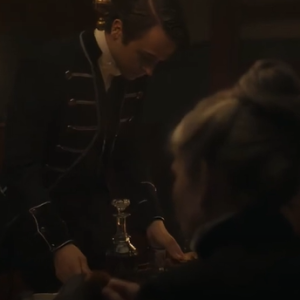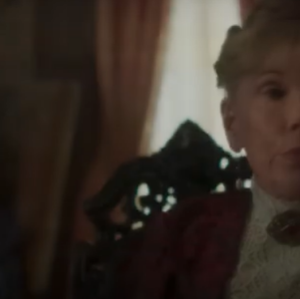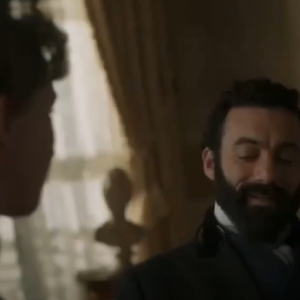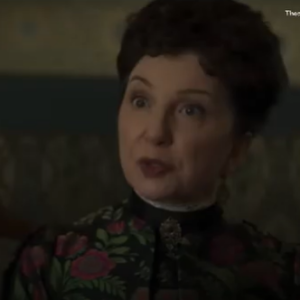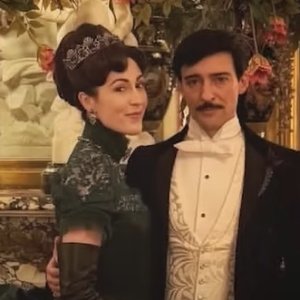The hit historical drama The Gilded Age has entranced audiences with its opulent portrait of 1880s New York society, where marble halls glitter as brightly as the secrets whispered behind closed doors. As Season 4 nears, anticipation centers on Bertha Russell, a force of ambition whose ascent into the city’s elite has recalibrated the social map. Bertha’s relentless drive to secure her family’s place among old money circles has ignited clashes with the era’s titans, and the new season promises to push her to develop a startling, even subversive, strategy: turning her erstwhile adversary into a powerful ally. It’s a conceit that speaks to the heart of the Gilded Age itself—the instability of status, the malleability of loyalty, and the fierce calculus that wealth and influence demand from those who wield them.
From the moment the series introduced Bertha, her campaign for recognition from Mrs. Caroline Aster, the Van Rensselaers, and their circle established a central tension: the outsider trying to rewrite the rules of acceptance in a world that prizes lineage and decorum. Bertha’s partnership with her husband, George Russell, has always been fueled not merely by a shared bank account but by a strategic vision of social dominance. In Season 4, that vision may pivot in a most dramatic way: a shift from competitor to collaborator, a professional détente that reconfigures loyalties across the upper echelons of New York’s social theater. The prospect is certainly thrilling because it literalizes the era’s famous paradox—how the most bitter feuds can produce the sharpest coalitions when survival and power hang in the balance. If Bertha can seize this opportunity, she will not only cement her status but redefine what a queen-maker looks like in a world governed by inherited privilege and new fortunes.
The narrative implications of Bertha’s potential alliance are as electric as they are dangerous. An enemy turned ally would mean that the old guard’s walls may no longer serve as impenetrable barriers, but rather as springboards for recalibrated alliances. Viewers have long understood Mrs. Aster as an immovable obstacle, a symbol of the entrenched social ladder Bertha must climb. Yet the show’s best moves often come from the most unexpected reconfigurations: a mutual interest in influence, a shared enemy, or a revelation about a partner’s own vulnerabilities. Season 4 could reveal that Mrs. Aster’s resistance was never absolute, that beneath the surface there lies a pragmatic mind capable of weighing risk against opportunity. If a couched truce emerges, it might be built on delicate compromises, whispered bargains, and the knowledge that the era’s social power depends less on rigid order than on the ability to adapt when fortune shifts as quickly as a ballroom chandelier sways in a gust of gossip.
The thematic resonances of Bertha’s evolving alliance are rich and layered. A reconciliation—if it occurs—would dramatize the broader arc of the series: the fusion of old money’s prestige with the audacious momentum of the new elite. The alliance could serve as a microcosm for the era itself, where evolving fortunes demand new codes of conduct, and where influence is won not only by who you know, but by how you leverage the sympathy or fear of rivals. The show has always excelled at the choreography of power—how a single decision can tilt the entire social axis, how public gestures collide with private ambitions, how appearances must be carefully curated even as ambitions burn with ferocious intensity. Bertha’s potential rise from outsider to curator of power would crystallize this tension, offering audiences a visceral portrait of reinvention: not a repudiation of her roots, but a recalibration that could crown her as a new kind of political actor within the gilded ecosystem.
Season 4’s proposed trajectory also promises a cascade of intricate emotional and relational dynamics. If Bertha gains a former adversary’s backing, the fallout will ripple through friendships, hatreds, and confidences alike. The knowledge that a rival now operates as an ally adds a layer of dramatic irony to every subsequent scene: a whispered plan in which loyalty is a movable piece on a square, a shared toast that could conceal a hidden agenda, a public display of unity that simultaneously hides private calculations. The risk of betrayal remains a constant undercurrent, given the era’s merciless press and the ever-watchful eyes of society’s gatekeepers. Yet the possibility of cooperation also invites a more nuanced portrayal of Bertha, one that explores not only her hunger for status but her capacity for strategic generosity, for understanding that power can be amplified when rivals recognize a shared stake in a more complex, interconnected network of influence.
The wardrobe, the sets, and the period details will likely amplify this narrative turn as well. The show’s production design has always treated social maneuvering as a tactile craft—costumes that signal alignment or defection, interiors that broadcast alliances, and the choreography of introductions and refusals that make every scene feel like a political maneuver. Bertha’s evolving alliance would be reflected not just in dialogue but in the visual language of the series: a shift in who sits where, who toasts to whom, and who controls the opulent space of the opera house, charity galas, and social salons that serve as the stage upon which power is exercised and tested. In this way, Season 4 can translate the abstract into the tangible, letting viewers feel the weight of a decision to trust a former enemy in every breath, every glance, and every calculated pause before a shared, potentially dangerous, future. 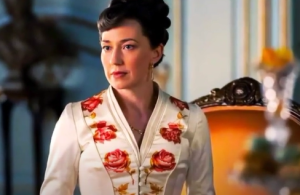
As anticipation builds, fans are left to wonder what form this alliance will take: a discreet brokering of favors, a public show of unity to preempt a greater threat, or a more personal agreement that ties Bertha’s fortunes to a rival’s ambitions. Whatever shape it takes, the alliance would be a testament to the Gilded Age’s enduring fascination: that within the gleaming surface of success lies a jagged, living map of rivalries, loyalties, and the unending appetite to ascend. Bertha Russell’s potential transformation from adversary to ally is not simply a plot twist; it is a lens through which Season 4 can interrogate the nature of power, the fragility of reputations, and the surprising ways in which the city’s most formidable players negotiate the ever-shifting rules of a society defined by wealth, lineage, and ambition.
